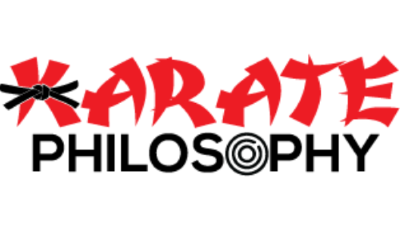Gichin Funakoshi‘s 19th precept of karate says that “Do not forget the employment or withdrawal of power, the extension or contraction of the body, the swift or leisurely application of technique”
(一、力の強弱体の伸縮技の緩急を忘るな Hitotsu, chikara no kyōjaku, karada no shinshuku, waza no kankyū o wasuruna)
Let’s consider the first part of the precept “do not forget the employment or withdrawal of power“. Here Funakoshi reminds us that we need to know when to use power and when to abstain. In most karate techniques, you only need to deploy power at the brief moment of kime. At all other times, you will need to relax because this can help you conserve energy while enhancing speed. The only exception is when there is some kind of resistance to your technique and hence you may need to apply force for an extended duration.
Relaxation and tension, power and its absence, stand as opposites, yet they must coexist otherwise you will end up with useless techniques. Without relaxation, you will have tension 100% of the time and that means rigid, slow, and ineffective techniques. Without tension at appropriate times and you’ll end up with 100% relaxation, yielding techniques without any substantial power which are also equally ineffective.
If you have only recently started karate, this may be hard to grasp and implement but as you progress and become more experienced, you will be able to do this naturally.
Similarly, the next part of this precept “do not forget… the extension or contraction of the body” refers to the need to expand and contract your body at the right time in order to produce effective and powerful techniques.
For instance, if you are to perform an uraken, at the initiation of the technique, you should sense the tightening of your chest muscles while your back muscles should experience a stretch. Upon completing the strike, the reverse should hold true: the back muscles should tighten, and the chest muscles should stretch.
Muscles act like springs, contraction is potential energy that is stored in compressed muscles and when you release this contraction (i.e., expand your muscles), you drive the technique and you give your technique power. In order to deliver effective techniques, you need to develop the ability to utilize both energy forms and power-generation methods.
The last part of this precept “do not forget … the swift or leisurely application of technique” is more applicable to kata practice than in actual combat, in my opinion.
In street fights, most encounters are over in less than a minute, there is no place for slow and controlled movements. However, in kata, there are usually a combination of techniques that are meant to be fast and powerful and techniques that are meant to be slow and flowing. Fast and powerful techniques are generally intended to finish off the opponent swiftly. Slow and flowing techniques are either intended for grappling and taking down an opponent or done in such a manner so that practitioners are aware of the subtleties of the techniques.
In summary, understanding body mechanics is the key to producing powerful and effective techniques. This includes, among other things, knowing when to use power and when to abstain, when to contract and when to expand your body, and which techniques are meant to be performed swiftly and which ones are to be executed deliberately slowly.
All Posts in the Series:
Precept 1: Do Not Forget that Karate-do Begins and Ends with Rei
Precept 2: There Is No First Strike in Karate
Precept 3: Karate Stands on the Side of Justice
Precept 4: First Know Yourself Then Know Others
Precept 5: Mentality Over Technique
Precept 6: The Mind Must Be Set Free
Precept 7: Calamity Springs from Carelessness
Precept 8: Karate Goes Beyond the Dojo
Precept 9: Karate Is a Lifelong Pursuit
Precept 10: Apply the Way of Karate to All Things, Therein Lies Its Beauty
Precept 11: Karate Is Like Boiling Water: Without Heat, It Returns to Its Tepid State
Precept 12: Do Not Think of Winning, Think, Rather, of Not Losing
Precept 13: Make Adjustments According to Your Opponent
Precept 14: The Outcome of a Battle Depends on How One Controls Truth and Fiction
Precept 15: Think of the Opponent’s Hands and Feet as Swords
Precept 16: When You Step Beyond Your Own Gate, You Face a Million Enemies
Precept 17: Kamae Is For Beginners; Later, One Stands In Shizentai
Precept 18 – Perform Kata Exactly; Actual Combat Is Another Matter
Precept 20: Be Constantly Mindful, Diligent, and Resourceful in Your Pursuit of the Way
References:
Gichin Funakoshi (1938) The Twenty Guiding Principles of Karate

